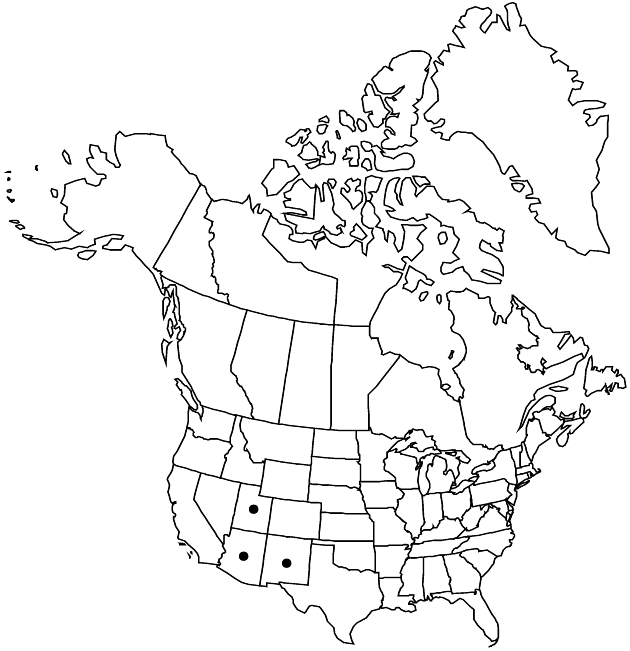Ericameria nauseosa var. arenaria
Phytologia 75: 85. 1993.
Common names: Sand rabbitbrush
Endemic
Basionym: Chrysothamnus nauseosus subsp. arenarius L. C. Anderson Phytologia 38: 311, fig. 1. 1978
Synonyms: Chrysothamnus nauseosus var. arenarius (L. C. Anderson) S. L. Welsh
Plants 70–120 cm. Stems grayish green, moderately leafy, moderately compactly tomentose. Leaves grayish green; blades 1-nerved, linear, 40–75 × 0.8–1.1 mm, faces tomentose. Involucres 16–19 mm. Phyllaries (19–)22–27 (in strongly vertical ranks), apices ± recurved, cuspidate-aristate, abaxial faces glabrous or glabrescent. Corollas 12–14.2 mm, tubes glabrous, lobes 1.2–2 mm, glabrous; style appendages longer than stigmatic portions. Cypselae hairy; pappi 9.6–12.7 mm. 2n = 18.
Phenology: Flowering late summer–fall.
Habitat: Sandhills and sandstone cliffs
Elevation: 1500–2000 m
Distribution
Loading map...

Ariz., N.Mex., Utah.
Discussion
Selected References
None.
Lower Taxa
None.